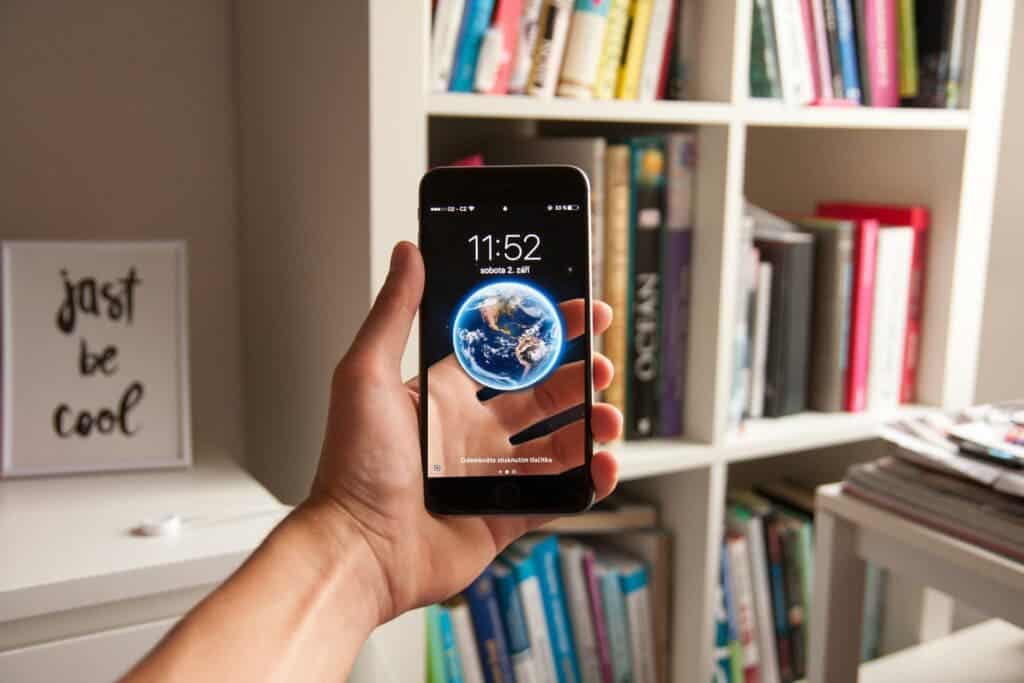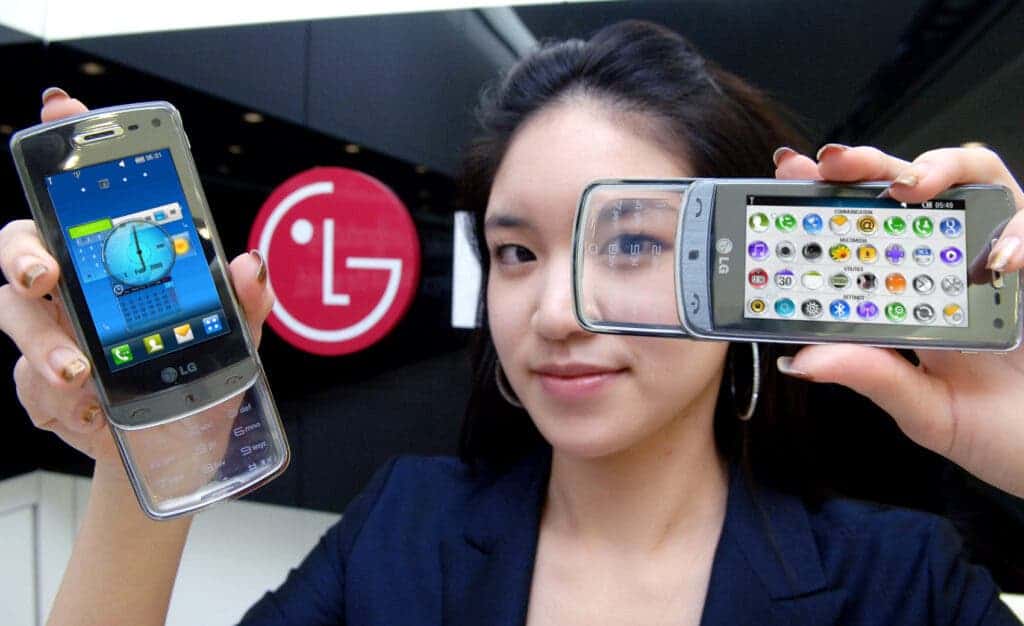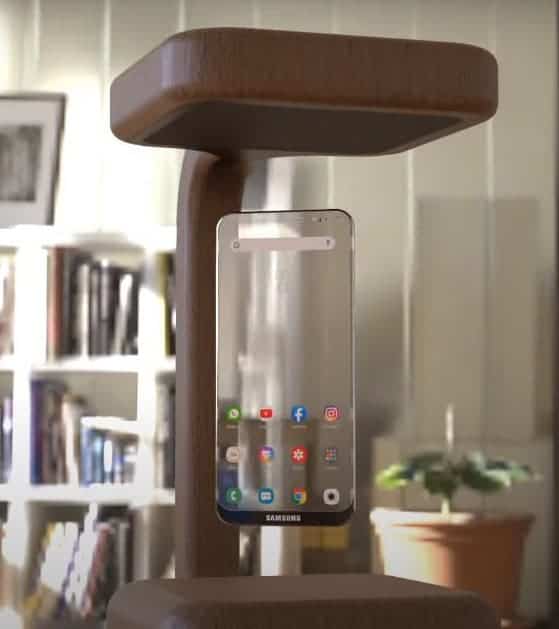We’ve seen smartphones change drastically over the years, is going transparent the next stage of their evolution? We’re not sure yet, but companies seem to be taking it seriously.

A few tech giants have already received patents for their respective transparent phone designs, but this doesn’t necessarily mean they’re already working on transparent smartphones. The problem is that this type of design not only requires changes in the design or one particular part of the device but it asks for a complete makeover.
From the display to cameras, sensors, and circuitry, phone engineers might have to make each and every component transparent if they wish to develop a true lucid smartphone — or assemble them in such a way that those components don’t overlap with the transparent screen. This is definitely not going to be easy, but if they somehow achieve this difficult feat, this might revolutionize other gadgets around us as well.
Furthermore, the advent of transparent smartphones may lead us towards the creation of transparent televisions, laptop screens, cameras, and a whole new generation of transparent gadgets.
No surprise, such cool gadgets would make the current devices look like ancient artifacts (at least, in terms of appearance).
Are there any real-life transparent smartphones yet?
Well, not quite.
Although they’re not exactly like the ones you may have seen in The Expanse, Real Steel, or Minority Report, some companies have tried to develop transparent phones — not smartphones — or at least make them partially transparent. Although they were ahead of their time, some designs were actually pretty impressive.
In 2009, LG introduced the GD900, a stylish slider phone that was equipped with a see-through keyboard, it is considered the world’s first transparent phone. The same year, Sony Ericsson launched Xperia Pureness, the world’s first keypad phone with a transparent display.

Despite its unique design, the Xperia phone received poor ratings from both critics and users due to its poor display visibility and it didn’t turn out to be a very successful product. A couple of years later, Japanese tech company TDK developed transparent bendable displays using OLEDs (organic light-emitting diodes).
In 2012, two other companies in Japan (NTT Docomo and Fujitsu) joined hands to develop a see-through touch screen phone, and they did come up with a prototype that also had a transparent OLED touchscreen.
The following year, Polytron Technologies from Taiwan, released some information about a transparent smartphone prototype they developed. Though the camera, memory card, and some motherboard components in this Polytron device were clearly visible, the phone almost looked like a piece of transparent glass.
The see-through display technologies demonstrated by TDK, Docomo, and Polytron were impressive but for reasons that are not entirely clear, they never became a part of the mainstream touch phones.

However, the most exciting developments concerning transparent smartphones have happened much more recently. In November 2018, WIPO (World Intellectual Property Office) published Sony’s patent for a dual-sided smartphone transparent display, reports reveal that Sony is soon going to use this see-through display design in its upcoming premium range smartphones.
The next year, LG received a smartphone design patent from USPTO (the United States Patent and Trademark Office) that shined a light on the company’s plans for a foldable transparent smartphone. However, LG has also said they will stop making phones because the market is too saturated — so it’s unclear whether something will actually come of this design.
Leading tech manufacturer Samsung is also said to be in the process of developing a see-through smartphone. According to a report from Let’s Go Digital, The company had a patent (concerning a transparent device) published on the WIPO website in August 2020. The same report also reveals that in the coming years, Samsung aims to launch smartphones and other gadgets in the market (under its popular Galaxy series) that would come equipped with a transparent luminous display panel.
Are transparent smartphones even practical?
Just because big brands like Sony, LG, and Samsung are working on different projects related to transparent smartphone technology, it doesn’t mean we’re close to seeing actual see-through phones very soon.
Many tech experts believe that while transparent smartphones may sound like a futuristic idea, they may not be feasible, for several reasons.
Surprisingly, one of the main challenges with transparent smartphones is the camera. You can definitely make transparent displays using OLEDs, but what about the rear and front-side cameras?
There is no known way by which a phone engineer can make camera sensors go transparent. The same goes with other parts like SIM cards, memory chips, and speakers, if these components are still visible in a see-through phone then it is no better than the Polytron prototype of 2013.
So while there’s a realistic chance of transparent-screen phones becoming a reality, how exactly a fully transparent phone would be built is not at all clear.
Another issue that users might face with transparent smartphones is poor display visibility. The screens used in current smartphones may not be transparent but they offer clear and sharp picture quality, whether you use them under bright daylight or in the dark.
Transparent displays might not be able to deliver such a flawless visual experience, and users may even struggle to see the text or images clearly on a see-through screen in daylight conditions.
Until and unless these major issues are resolved, we probably won’t be able to see transparent smartphones in the market. But why would we even want one?
Well, there are some merits to transparent smartphones. For instance, the notification and alerts could look more clear and more distinct on a transparent screen, and such a display might be conveniently used in a divided manner to use different applications at the same time.
Moreover, you could use both sides of a see-through display; this would facilitate multitasking and save a lot of time. For example, you are watching an educational video or recipe on YouTube and you are noting down points from the same in a different tab.
With a double-sided transparent screen, you don’t need to close your video tab every time you need to switch to another tab, you can just flip your phone to jump to the tab you want to use.
Transparent smartphones might also bring a drastic improvement in the way you experience augmented reality. The screen which serves as a barrier between your real and virtual worlds if becomes transparent, then you may not need an AR app to see virtual elements in the real world.
The transparent screen itself may act as an AR simulator but then again such a screen may not be able to give you as good virtual imagery as you experience on a normal display.
Let’s face it: transparent phones would be very cool, but we’re not quite there yet. We can geek out about them as much as we want, but a transparent smartphone still requires a healthy amount of innovation that might take some time to evolve. With how quickly technologies are progressing, though, we may see them in the not-too-distant future.

![LoeoeL for iPhone 13 Case Clear, Transparent Hybrid 13 Phone Case [Hard Plastic & Soft Silicone Bumper] Acrylic Non Yellowing Thin Slim Protective Cover for Women, Light Pink](https://m.media-amazon.com/images/I/319UCJQwevL.jpg)


![Temdan Designed for iPhone 15 Pro Max Case Clear, [Crystal Clear][Non-Yellowing][Military-Grade Drop Protection] Slim Shockproof Protective Cover Phone Case for iPhone 15 Pro Max 6.7 '](https://m.media-amazon.com/images/I/41HfUBPChPL.jpg)


